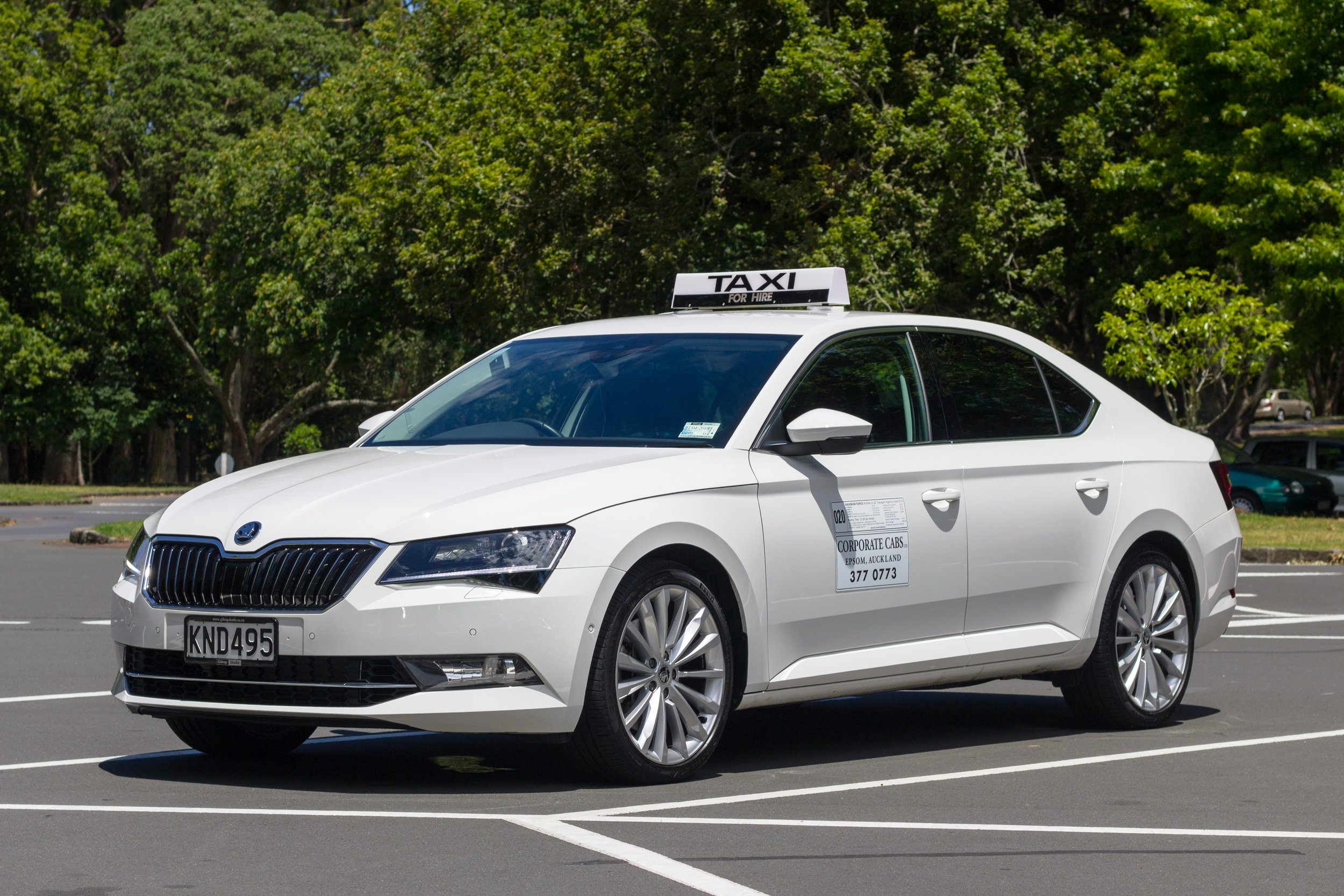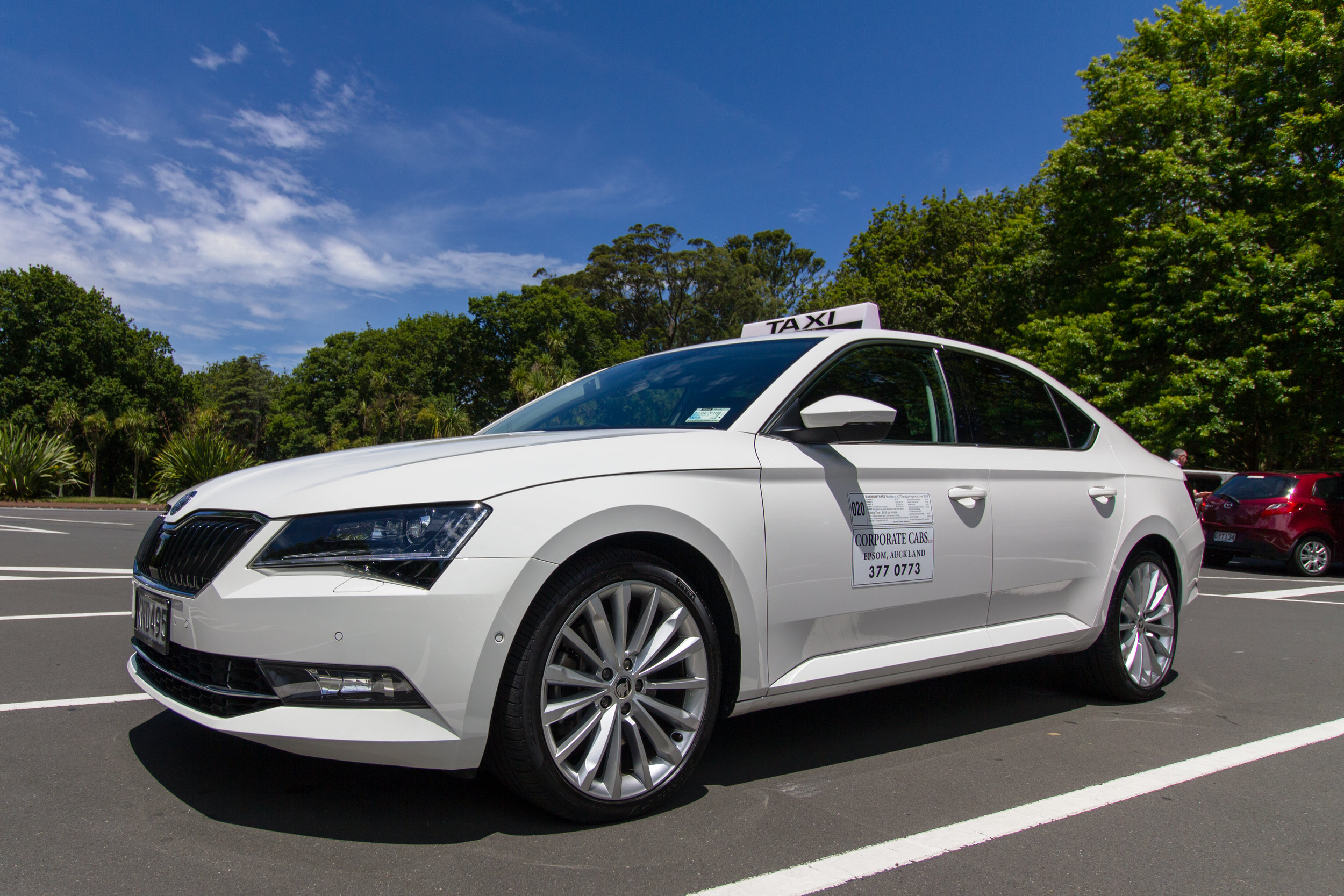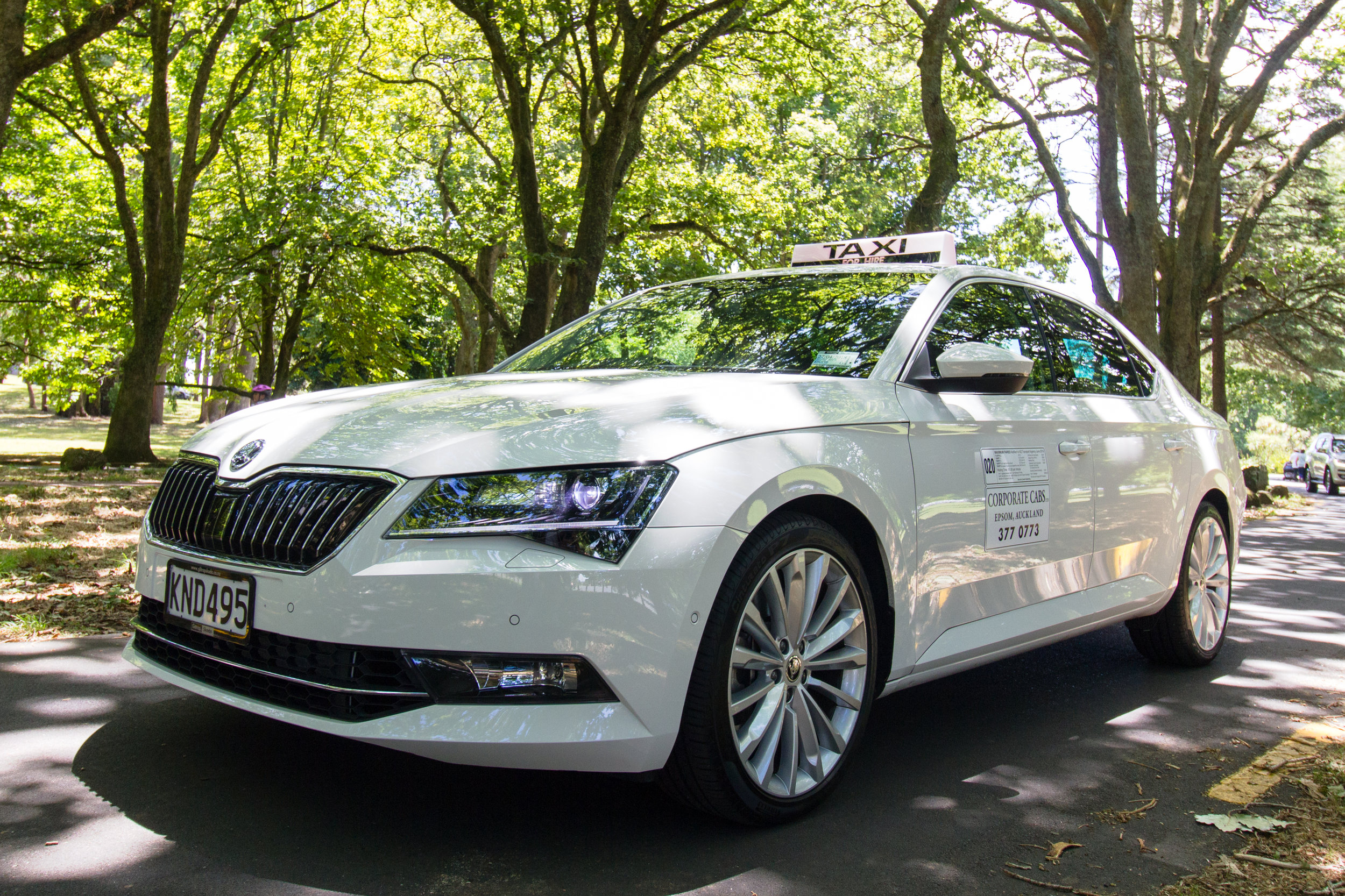Superb picking up Commodore fare
/Heard the one about the elite taxi service buying big into the largest Skoda sedan? Have now.




The country’s biggest corporate fan of Australia’s classiest large cars has kicked that habit and gone to a big European.
The future is looking Superb – yes, with a capital ‘S’ – for Corporate Cabs, a standard-setter for quality service in Auckland, Wellington, Christchurch, Dunedin and Queenstown.
The operation has finally resolved to an issue that has gnawed: Life beyond the death of the big Australian luxury sedans it has steadfastly supported. Beyond the point where their makers did not.
Seven months on from their final choice, the Calais edition of the VE2 Commodore, ceasing production, the solution to this issue has been announced, by the replacement car’s provider.
It’s a Skoda. The biggest sedan the VW-owned Czech crowd creates.
Okay. Take a moment here. Don’t diss the Superb with silly heard-em-all-before brand-centric swipes.
This car is Euro upmarket chic with a pragmatic twist. Just as roomy and damn near as comfy as the swank BMW 7-Series Government went to when it broke its own Aussie fix when retiring Ford LTDs from Crown duty in 2011: Full leather, tri-zone air conditioning, LED ambient lighting, heated front seats, sat nav, a full suite of safety aids including lane and blind spot assist and autonomous braking, electric opening and closing boot, keyless ignition, parking sensors and LED lights. Swish.
And if there’s any good humour to be heard, it’s gotta come from Skoda NZ. They’re probably laughing all the way to the bank over this sole choice contract. It’s a very big deal, their largest ever by some margin. Four hundred cars. The first being delivered in Auckland at the end of this month at a ceremonial handover including Maori blessing.
By end of year, another 46 will be on the road. The roll-out will likely take until 2022 to fulfil. This is because Corporate Cab drivers, all owner-operators, renew their cars every five years and some have only just snapped up the last of the Holden Calais stock.
Something about how this deal came about has been revealed by Skoda New Zealand’s GM Greg Leet, above.
Negotiations took time, because this represents a big change in technical terms, too: Abdicating rear drive for front, full automatic for an automated manual direct shift gearbox. Retiring six and eight-cylinder engines for, ultimately, a 1984cc turbo four petrol.
About that engine choice. As much as anything else, what ultimately swung the deal was when the parent in Mlada Boleslav, in the Czech Republic, green-lighted development of a bespoke car, because the client decided it wanted a special blend that wasn’t at that point on the local books – the 162kW engine from a high-performance petrol variant not offered here with the plush Style specification that has been readily available.
Even though the resultant car can snap out 0-100kmh in seven seconds, and has the grunt to meet those ‘five minutes before the plane boards’ rush runs, it’s not just about the pace.
“The car is very luxurious, as opposed to sporty, and it is absolutely matched to what they want,” say Leet.
He prefers not to put a figure on the value of the deal but agrees it is considerable enough to be considered a big success within the Giltrap Group company.
“I did not approach the deal as a massive profit opportunity; for me it’s an opportunity to grow awareness in the corporate space. Every person who is in a Corporate Cab is typically an influencer in the purchase of a car.
“So, it’s really important that those people have an experience of our brand.
“We’re really excited that every Corporate Cab you see today will be a white Skoda Superb that we’ve bought in for them.”
The potential for buy-in is literal – the very model conceived for the job will be available for general sale. In $57,990 sedan and $59,990 wagon formats, and available in any colour but the hue Corporate Cabs uses (cos that’s theirs alone) the car will sit between the entry $47,490 Style and a pair of four-wheel-drive editions, which have the same engine as the new car but respectively in 132kW and 206kW formats.
BTW, Skoda’s boss says simply multipling the showroom stickers is not an accurate guide to working out the fleet deal’s value.
Unsurprisingly, given the size of the order, Corporate Cabs wangled a significant discount, though not so cut-throat that the distributor won’t make money, he assures.
“We are making money out of this.”
He is highly impressed by Corporate Cabs’ business model and how it is giving consideration now to mobility solutions of the future.
“They have given thought to some really innovative, exciting developments and we see ourselves as being part of the solutions they are giving thought to.”
Convincing that the Superb stacked up for size was an initial challenge, resolved when the latest model addressed a point of concern about back seat width.
“The old car was long enough but considered a bit too narrow in the back. The new car resolves that issue.”
It has virtually the same expansive rear seat space even though they are 200mm off the three metres wheelbases of the LTD/Fairlane and Statesman/Caprice that Ford and Holden created from stretching their base Falcons and Commodores. Cars they abdicated (Ford in 2007, Holden in 2010), the buyer pool having shrunk to the point where the cabbies and politician fanbase couldn’t save them.
Even though Holden and Ford have never been any less blue collar either, one disquiet about Skoda within the ranks that took time to reconcile was how its badge would be perceived. That’s one concern that has eased with time; when talks first started, smart-arse Skoda jokes were prevalent – chat you don’t hear much now, cars such as this one (and the Kodiaq) having finally got the message through that this is now a serious VW Group brand.
Anyway, any Skoda-phobia within the ranks was hardly universal. Leet knows some drivers were petitioning for the car even before trials began.
Fuel type was discussed. Though the Aussie cars were far from being paragons for economy and emissions, it’s well known – because, you know, cabbies love to talk cars - there was resistance to the 2.0-litre diesel Skoda was leading with when talks began. Not so much because of operating costs but because that fuel type was deemed unpalatable to paying customers. In any event, the new-gen petrols are offering thrift unheard of from the Aussies. The 162kW mill will optimally return 6.4 litres per 100km, which though not on par with the diesel (4.7) is still pretty decent.
Leet is still a big diesel fan – and, ironically, he’s had an oiler right this price level that was conceivably good to go (the $57,490 Style Plus) - but he’s relaxed on this matter. Hat the customer wants, the customer gets.
“The new car also offers fuel efficiency and a number of other driver benefits that the cost of franchise is actually reduced. The service intervals are longer than the competitors.”
Leet appreciates Corporate Cabs was never going to rush into an agreement and he knows the Superb was one of a number of contenders, including some high-end stuff he’s not prepared to name and, even though their new ZB Commodore is more a medium-large than a big car now, Holden again.
“They are a cautious business. Each person who drives for Corporate Cabs is a franchise owner, who has purchased the business. So they have the responsibility to ensure they make absolutely the best decisions, to ensure their future and, therefore, the business model.”
He’s not bothered that this will be such a gradual changeover. “Some drivers have only got Commodores that are months old. It makes no sense for them to buy a new car now.”
Holden New Zealand was unable to give data on how many Calais, Statesman and Caprice models it has supplied to Corporate Cabs over the years. There is no comment about what vehicle it was offering to maintain the work.
Essentially, though, this new contract means the best ongoing chance Holden fans now have to enjoy their favourite car from the back seat is one that many might well find unpalatable.
The largest fleet user of Commodores, with an association set to continue with the ZB (for the greater part of its perceived production run), has always been the NZ Police.

















